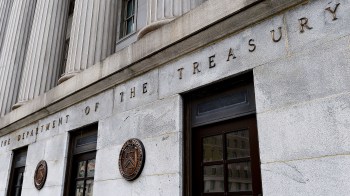Social Security is going paperless. My 85 year old Mom won’t be happy. She has nothing against progress, but she trusts paper more than electronics. (And she’s never believed in the accuracy of bank computers. I used to think it was an eccentricity on her part. Considering what we have learned about banks and their back office operations these past few years, maybe she was ahead of her time.)
Still, Social Security checks and other government benefits won’t come in the mail much longer. It’s a digital world.
The U.S. government is phasing out paper checks for these benefit programs, under a Treasury Department rule finalized Tuesday. The Treasury expects the shift to save Social Security $1 billion over the next 10 years.
The Treasury Department’s rule, although slightly modified from a proposal it unveiled in June, requires electronic payments for government programs such as those providing Social Security payments and veterans’ compensation and pension benefits.
Under the final plan, anyone applying for benefits on or after May 1, will receive their payments electronically. People who already receive paper checks will need to switch to direct deposit by March 1, 2013.
Web-based peer-to-peer lending is growing. This is a good introduction to one of the biggest players, Lending Club. I’ve posted a number of skeptical looks about peer-to-peer lending.
After my latest post I got a call from Renaud Laplanche, CEO and founder of Lending Club. It was an illuminating conversation. One of the points he made has stuck with me. The business essentially thrives off the credit card companies.
The only interest rate that is at an all-time high is credit card rates. Everything else is down. In essence, the Lending Club company figures that its customers on a risk-adjusted basis should be paying around 12%–far less than 18%. “We are one of the companies that identified a market inefficiency,” he says. “We are targeting people doing the right thing but their credit card debt is weighing them down. They can pay off the debt faster at a lower rate.”
The bad news on the job front might be even worse than we think. The official unemployment rate is 9.8%. But the broadest measure of unemployment and under-employment is 17%. Here is an explainer on what these numbers mean. The article highlights an even bigger concern on the job front.
What even that bleak figure leaves out, though, is the dynamic nature of the labor market. No matter what the unemployment rate, workers are constantly moving into and out of the labor force. Even as one middle manager or mechanic is being fired, another somewhere else is getting hired, and while a freshly minted college graduate is just hitting the job circuit, his or her grandfather is preparing to retire…. What worries economists today is not just the size of the unemployment number but how this flow has slowed and, for a large portion of the labor force, become stagnant.
Remember the Little Red Book, quotations from Chairman Mao Tse-Tung? Well, modern economics publishes little yellow covered booklets of the latest research. The studies are published through the National Bureau of Economic Research. For anyone with a wonkish bent that wants to keep up on economics the NBER is worth checking out.
Okay, so why a post off the NBER? Well, if you really want to get upset about the nation’s economic future stop worrying so much about the federal government’s debt and deficit. Instead, focus on education, education, education. Eric Hanushek is a leading economist studying education. Here’s the abstract of his latest report, The Economic Value of Higher Teacher Quality (Warning: It’swritten in the dry language of modern economics.)
Most analyses of teacher quality end without any assessment of the economic value of altered teacher quality. This paper combines information about teacher effectiveness with the economic impact of higher achievement. It begins with an overview of what is known about the relationship between teacher quality and student achievement. This provides the basis for consideration of the derived demand for teachers that comes from their impact on economic outcomes…. A teacher one standard deviation above the mean effectiveness annually generates marginal gains of over $400,000 in present value of student future earnings with a class size of 20 and proportionately higher with larger class sizes. Alternatively, replacing the bottom 5-8 percent of teachers with average teachers could move the U.S. near the top of international math and science rankings with a present value of $100 trillion.
Yes, you read that right: $100 trillion. By my reckoning that’s a lot of wealth. A concern in this era of yawning state budget deficits is that many governors in the their zeal to hold the line on taxes and cut spending will end up driving good teachers away. That may be the perfect definition of penny-wise, pound-foolish.
Economic literacy matters. This reading list has been making the rounds of the econ blogsphere. For instance, Tyler Cowen remarked on it at Marginal Revolution. So did Harvard University economist Greg Mankiw.(I came on the list by way of Mankiw.) It’s five recommendations for books to introduce young people to economics. I haven’t read the books; I did read through the suggestions.
There’s a lot happening in the world. Through it all, Marketplace is here for you.
You rely on Marketplace to break down the world’s events and tell you how it affects you in a fact-based, approachable way. We rely on your financial support to keep making that possible.
Your donation today powers the independent journalism that you rely on. For just $5/month, you can help sustain Marketplace so we can keep reporting on the things that matter to you.


















